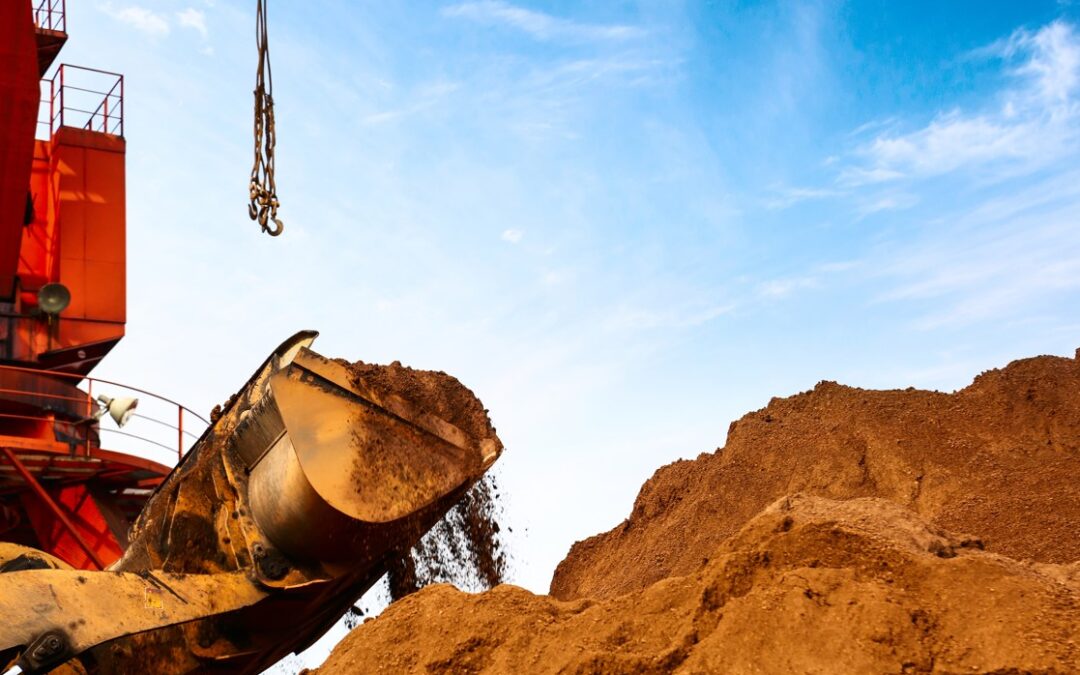Dredging is a vital component of modern mining operations, especially for extracting materials from underwater environments. This article dives into the process of dredging, exploring its uses, benefits, challenges, and impacts within the mining industry.
What is Dredging and How is it Used in Mining?
Dredging is the process of excavating sediment, minerals, and other valuable materials from underwater environments, such as rivers, lakes, and seabeds. In the mining industry, it is commonly employed to extract resources like sand, gravel, coal, and precious metals. This method allows mining companies to access materials that would otherwise be difficult or impossible to retrieve using traditional mining techniques. By utilizing specialized machinery, dredging makes it possible to recover resources from areas that are submerged or hard to reach. Furthermore, dredging proves especially valuable in alluvial mining, where minerals are typically found in riverbeds or on the ocean floor. As a result, it plays a critical role in expanding the range of extractable resources and improving the efficiency of resource recovery.
This method is also critical for maintaining navigable waterways, preventing flooding, and creating new land areas while recovering resources efficiently.
What is the Process of Dredging?
The dredging process involves several well-defined stages:
1. Site Assessment: Environmental Studies, Geological Surveys
Before operations begin, comprehensive site assessments are conducted. This includes geological surveys to evaluate mineral deposits and environmental studies to assess potential impacts. These analyses determine the project’s feasibility and guide equipment selection.
2. Planning and Permitting: Regulatory Approvals, Project Design
Obtaining necessary permits from regulatory authorities is a crucial step. Plans must comply with environmental and mining regulations, addressing aspects like water quality and ecosystem preservation.
3. Equipment Selection
Choosing the appropriate dredging equipment is critical to ensure operational efficiency. Factors such as sediment type, water depth, and mineral density play a key role in equipment selection.
4. Dredging Operations
Dredging begins with machines removing overburden and excavating the targeted materials. The extracted materials are transported via pipelines, hoppers, or vessels to onshore facilities for processing.
5. Processing and Recovery
The extracted materials are separated and refined to recover valuable minerals. For instance, gold dredging involves using gravity separation techniques to isolate gold particles from sediment.
6. Rehabilitation
After resource extraction, the dredged area undergoes rehabilitation. This includes restoring the land and water ecosystem to its natural state or repurposing it for other uses.
7. Compliance and Reporting
Throughout the process, compliance with environmental standards is monitored, and regular reports are submitted to regulatory authorities.
What Types of Materials are Typically Extracted Using Dredging?
The materials extracted through dredging vary based on the mining location and method. Commonly dredged materials include:
- Sand and Gravel: Used in construction and infrastructure projects.
- Precious Metals: Such as gold, often found in riverbeds.
- Coal: From underwater deposits in shallow areas.
- Rare Earth Minerals: Crucial for advanced technology and electronics.
What are the Main Types of Dredging Equipment Used in the Mining Industry?
The mining industry relies on various types of dredging equipment, including:
- Cutter Suction Dredgers: Ideal for harder sediment.
- Bucket-Ladder Dredgers: Used for heavy-duty excavation.
- Trailing Suction Hopper Dredgers (TSHDs): Designed for large-scale operations.
- Hydraulic Dredgers: Efficient for fine materials and alluvial mining.
Each type of equipment is chosen based on specific project needs, ensuring optimal efficiency and minimal environmental impact.
How Does Dredging Differ From Other Mining Methods?
Unlike surface mining or underground mining, dredging is performed underwater and focuses on extracting resources from sediments. It is often less invasive than open-pit mining but can still pose environmental challenges if not managed properly.
What are the Economic Benefits of Dredging for Mining Companies?
Dredging provides significant economic advantages for mining companies:
- Cost Efficiency: Accessing resources without extensive land excavation reduces operational costs.
- Resource Optimization: Allows mining companies to exploit underwater deposits that are otherwise inaccessible.
- Scalable Operations: Suitable for small-scale and large-scale projects.
How is the Efficiency of Dredging Operations Measured?
Efficiency in dredging is evaluated through several metrics:
- Material Recovery Rate: The percentage of recoverable minerals from dredged material.
- Energy Consumption: Assessing the fuel efficiency of equipment.
- Operational Downtime: Monitoring equipment maintenance and repair time.
What Safety Precautions are Necessary During Dredging Activities?
Ensuring safety during dredging involves:
- Regular equipment inspections to prevent malfunctions.
- Adequate training for workers to handle machinery and emergencies.
- Monitoring water currents and weather conditions to avoid accidents.
What are Some Common Challenges Faced During Dredging Operations?
Challenges in dredging include:
- Sediment Dispersion: Fine particles can affect water quality.
- Equipment Wear and Tear: Constant use in harsh environments leads to frequent maintenance.
- Regulatory Hurdles: Obtaining permits can delay operations.

How Does the Dredging Process Impact the Surrounding Environment?
Dredging can affect aquatic ecosystems by:
- Habitat Destruction: Disrupting marine life and seabed habitats.
- Water Pollution: Increasing turbidity and releasing contaminants.
- Erosion: Altering natural sediment patterns.
However, with proper mitigation strategies, such as controlled sediment disposal and habitat restoration, these impacts can be minimized.
What are the Regulatory Considerations for Dredging Operations?
Regulations governing dredging include:
- Adherence to environmental impact assessments.
- Monitoring water quality and aquatic habitats.
- Compliance with local and international mining laws.
Understanding the Comprehensive Dredging Process and Its Impact on the Mining Industry
Dredging plays an essential role in mining, offering an efficient way to recover valuable materials while maintaining a balance between economic benefits and environmental stewardship. By addressing challenges and adhering to regulatory frameworks, the industry can continue evolving toward sustainable practices.

